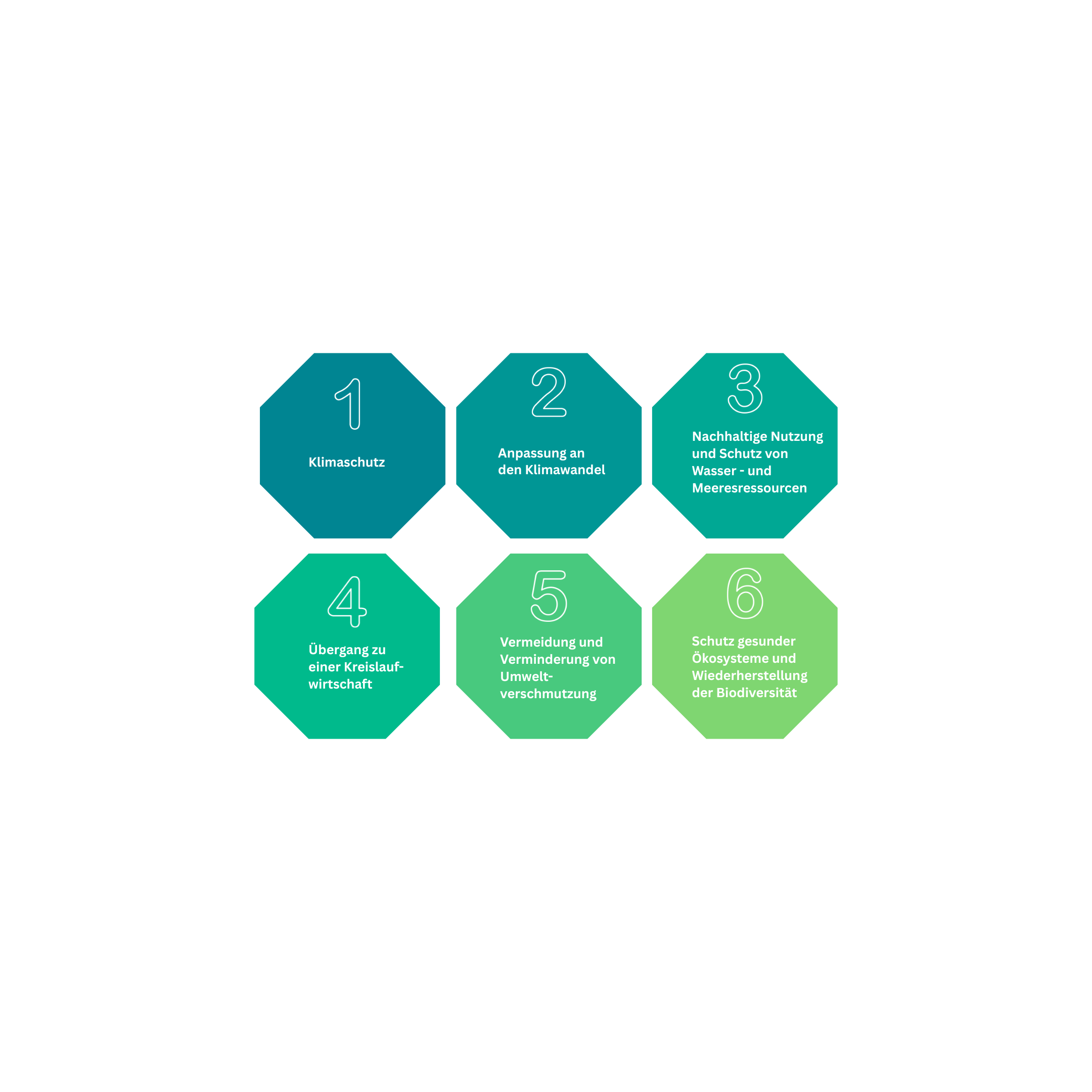EU taxonomy and ESG verification
Here you can find out what the EU taxonomy means for those involved in construction and how the conformity of construction products with the requirements can be checked.
Kontaktieren Sie unsEU taxonomy requirements for real estate projects and construction products
In its climate targets, the European Union has set itself the goal of reducing CO2 emissions by 55% by 2030 compared to 1990 levels. In order to achieve this goal in the long term, all sectors must actively shape the change towards sustainability.
But what does sustainability mean? And how is it monitored? How is sustainability defined in terms of the law? In order to provide guidance and make sustainable action assessable, the EU has developed a classification system for ecological management in the form of the taxonomy. In the long term, sustainability targets are to be defined for the areas of environment, social and governance. The taxonomy is therefore also based on the already established ESG criteria, i.e. non-financial factors that are used, for example, to evaluate companies, projects and investment opportunities. Read here to find out what the taxonomy means for those involved in construction and how the conformity of the construction products used can be easily checked.
We offer:
- Support with the implementation of sustainability goals in your construction project
- Personal advice on ESG and the requirements of the EU taxonomy
- Information on and support with the implementation of ESG requirements
- Information on certification systems for sustainable building, such as DGNB, LEED, BREEAM and many more.

The environmental objectives of the EU taxonomy
Environment was the first area for which the EU Commission set six specific targets:
- Climate protection
- Adaptation to climate change
- Sustainable use and protection of water and marine resources
- Transition to a circular economy
- Prevention and reduction of environmental pollution
- Protecting healthy ecosystems and restoring biodiversity
A target definition for the areas of social and governance is to follow soon.
In principle, to be classified as sustainable, a clearly positive effect must be achieved in one target area without impairing any of the other areas (Do No Significant Harm).
Guidance is also provided by the Taxonomy Compass of the European Commission for economic activities in the real estate sector. It describes in detail which requirements must be met in the individual target areas and which limit values must be complied with.
Easily meet the ecological building requirements of the EU taxonomy
Our specially developed tool Building Material Scout offers the perfect solution to relieve builders, manufacturers and project participants in the taxonomy-compliant product search and documentation. In the BMS product database, you can filter construction products directly by taxonomy conformity to find suitable products for your project quickly and easily. The BMS tool can also be used to create digital construction documentation for the materials, which contains proof of conformity with the ecological building requirements of the EU taxonomy.
ESG verification for DGNB projects

The DGNB offers its own ESG verification for projects in the areas of new construction, refurbishment, acquisition and ownership. This is not only based on the current taxonomy criteria, but also includes the companies’ labor and social standards. The DGNB’s ESG verification can be used for both individual buildings and portfolios.
You can find out more about ESG verification for the EU taxonomy here or directly from the DGNB.
We support you in integrating sustainability aspects and taxonomy requirements into your project planning and will be happy to advise you personally on any other questions you may have about sustainable construction.
Phone +49 711 62049-340
Email info@hoinka.com

